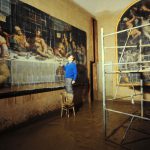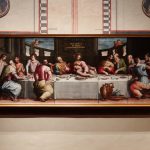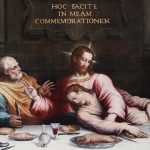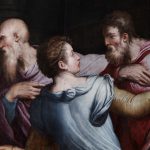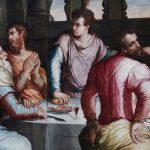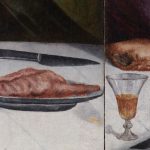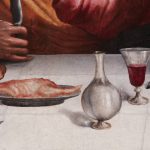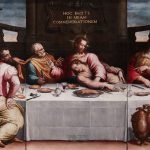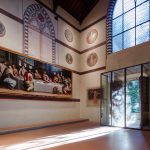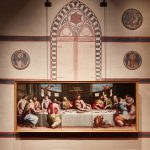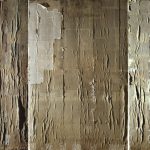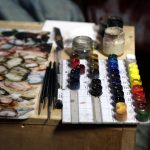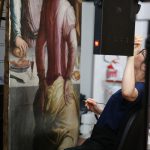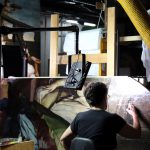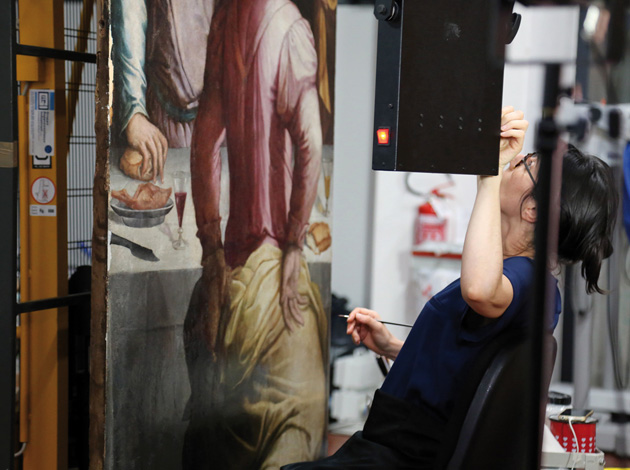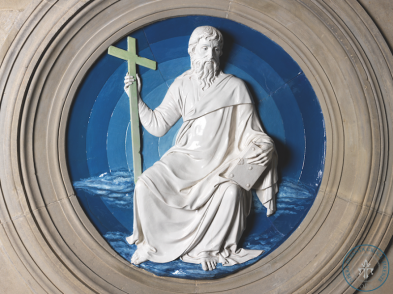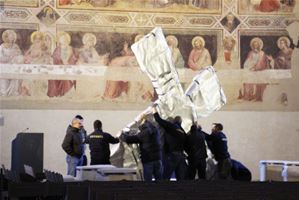- Father Franchi facing the Last Supper by Giorgio Vasari, severely damaged during the flood of 1966. Santa Croce Museum, Florence 1966
- ph_ZEP studio
- ph_ZEP studio
- ph_ZEP studio
- ph_ZEP studio
- ph_ZEP studio
- ph_ZEP studio
- ph_ZEP studio
- ph_ZEP studio
- ph_ZEP studio
- ph_ZEP studio
- photo_adicorbetta
- photo_adicorbetta
- photo_adicorbetta
In Santa Croce facts, chronicles and history become monuments in their own right. This is especially true for the Florentine floods, recollections of unexpected past events, which remain marked in the stones of this great temple of memory.
Efforts to prevent the effects of the moody Arno River are as old as Santa Croce itself. The early Franciscans strove to elevate the entire structure by considerable measure. They decided to build a new church, leaving beneath it a smaller temple built just a few decades earlier. But time will show that their efforts were in vain: they should have built higher.
As early as 1333, the Florentine chronicler Giovanni Villani criticized the lack of preparedness on the part of the people of Florence as each new flood was viewed as a tragedy that could have been prevented. Prevention and hydraulic emergencies were also considered in the era of Grand Ducal Florence especially with the work of two scientists, Vittorio Fossombroni and Pio Fantoni, both immortalized with monuments in Santa Croce.
In our time, readiness and preparation are taking on a new, unprecedented dimension as works of art, reduced to tragic conditions after the flood of 1966, are making their way “back home”.
In 2006, the return of eight restored masterpieces to the Museum of the Opera di Santa Croce was accompanied by new simulations of emergency scenarios. These drills confirmed a gulf between the world-class expertise acquired in the field of restoration and the dearth in ordinary practices for risk management used in the protection of cultural heritage. The evident need for improvement resulted in drafting the act on contingency plans for protection of works of art, which was signed by Florence’s most important institutions at the City Prefecture in 2010.
After considering the location, position, dimensions and weight of the artworks situated in the museum area of Santa Croce, only one possible solution emerged: the need for the definitive transfer of these works of art to a higher area of the monumental complex. In December 2013, Cimabue’s Crucifix was moved to the Sacristy and, a few months later, in May 2014, other major pieces were moved to the area of the Novitiate and the Medici Chapel of the Basilica.
What will mark this fiftieth anniversary of the flood for Santa Croce is the return of a masterpiece that few can remember having seen: The Last Supper by Giorgio Vasari. Described by foremost expert in Florentine art and former Italian culture minister Antonio Paolucci as an “Egyptian mummy wrapped in the bandages of Japanese paper”, the five panels measuring 262x580cm remained in the restoration labs of Opificio delle Pietre Dure for half of the century.
The comeback of this Last Supper is an evolutionary step in the field of restoration as well as the culmination of reflections on the safety of artworks and preventive decision-making. The Cenacolo, currently undergoing restoration, will be equipped with a mechanical lift and counterweight system designed specifically for this work of art in case of any upcoming danger.
In recent years, along with technical advancement, our approach has been to consider Santa Croce along with Florence’s river. Just as the Franciscans who settled in this area eight hundred years ago did, we must give value and appreciation to our “sister water” as we consider the policies of environmental sustainability.
As we move into the future, it is our hope that visitors will not only observe the flood markers or the signs of oil on the columns and tombstones of Santa Croce, but also be in awe of the extraordinary stories of techniques and philosophies of intervention that are able to transform the past into the contemporary.
The Vasari will be visible to the public for a special free viewing on Friday November 4 and Saturday November 5 from 8pm to midnight on both nights. Free entrance from piazza Santa Croce, 16 (the small door to the right of the facade, the entrance to the Pazzi Chapel cloister).
What still needs to be saved?
1. Vasari altarpieces, c. 1570s
There are eight of them in the nave of Santa Croce.
2. Ridolfo and Michele di Ridolfo del Ghirlandaio (?), Coronation of the Virgin with Saints Sebastian and Rocco, c. 1530s. Only the painted layer survives; the wooden support has completely gone.
3. Santi di Tito (?), Crucifixion with the Virgin, Saints John the Evangelist, John the Baptist and Mary Magdalene, 1590c. Again, only the painted layer survives; the wooden support has completely gone.
4. Wooden pieces of the large Vasari altar, all stored in the Medici Villa of Poggio a Caiano

